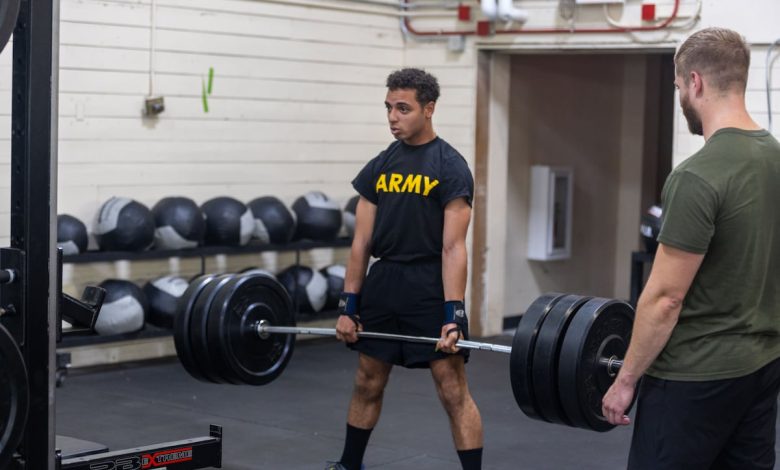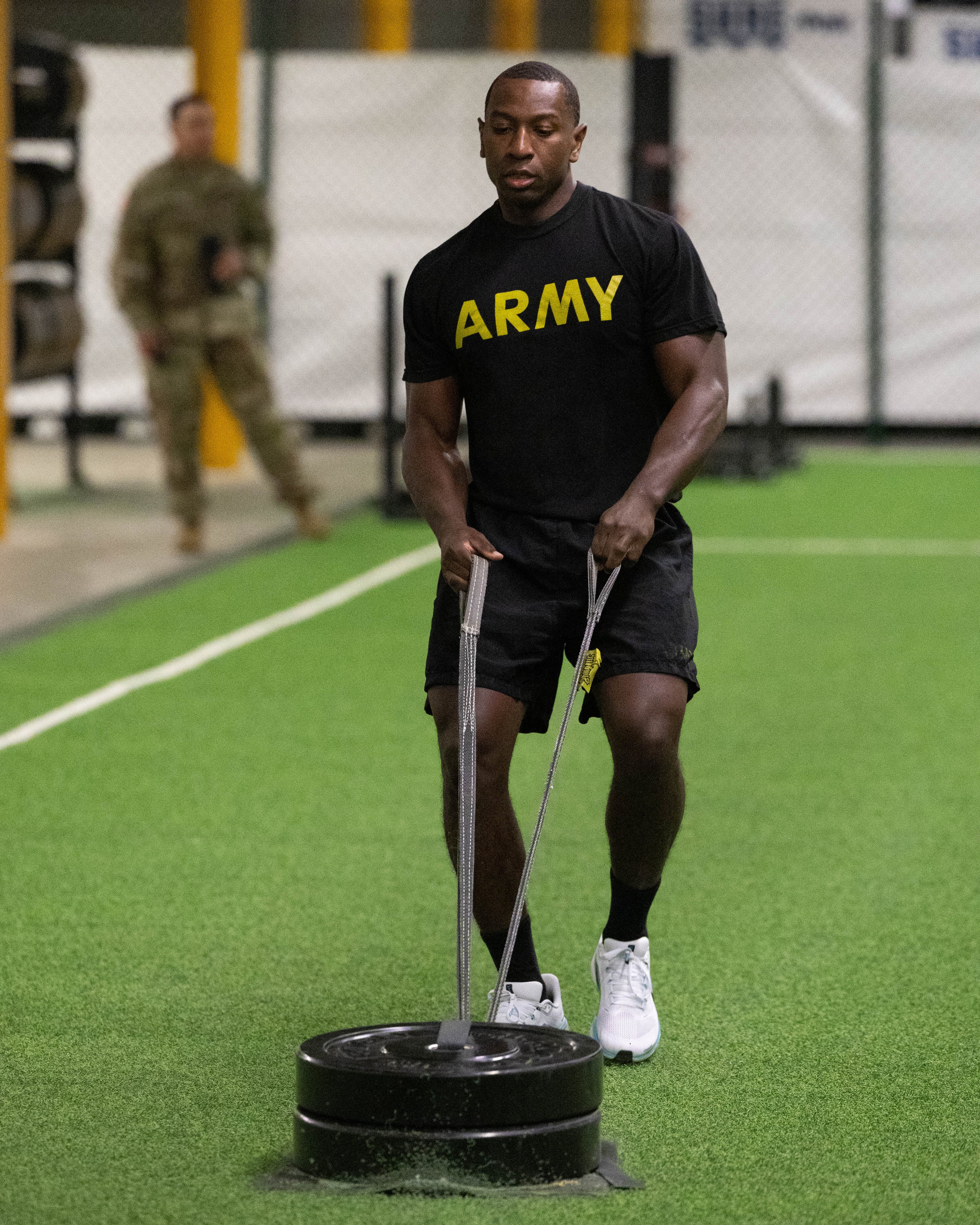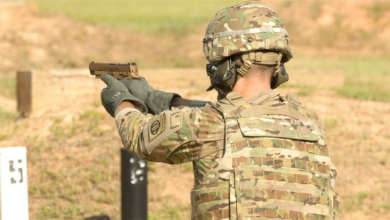Army to expand holistic health and fitness program to all soldiers

The Army is expanding its new all-around health and fitness program, which includes professional civilian staffing, workout gear and more, to all soldiers rather than only combat brigades.
Army Vice Chief of Staff James Mingus told soldiers at the Maneuver Warfighter Conference at Fort Moore, Georgia, on Wednesday that the Holistic Health and Fitness program, also called H2F, will roll out across the entire force.
The program was showing too much benefit to be used only by the combat arms brigades, according to the four-star.
“It is an Army program, and it is making a huge difference on how our soldiers are performing out there,” Mingus said.
The Army launched a pilot H2F program in late 2018 and began equipping combat arms brigades with full complements of gym equipment and H2F staff, including physical therapists, dietitians, occupational therapists, athletic trainers, strength and conditioning coaches and cognitive performance specialists, in 2020.
RELATED
The program’s holistic approach addresses five domains: physical, spiritual, mental, sleep and nutrition.
The original plan called for the service to outfit all 110 combat arms brigades by 2030. Chief of Staff Gen. Randy George announced last year that the Army would speed up fielding by increasing the annual number of brigades from 10 to 15. The fully resourced program had reached 50 brigades this year, including some military police, medical, engineer and sustainment brigades, according to Army data.
Mingus didn’t share specifics or timelines on the rollout, which will require more funding from Congress. But he advised leaders to begin work in their units now.
“A lot of our formations still don’t have it but there are things you can do,” Mingus said. “I would challenge you to study what is the essence of how you assess the program and execute functional fitness, nutrition, sleep.”

The Center for Initial Military Training, or CIMT, at Fort Eustis, Virginia, launched the Holistic Health and Fitness website in late August. The site contains information on all aspects of the program such as unit resources, the H2F Academy and the command’s annual H2F Symposium.
“We wanted to develop a website that provides tools for soldiers to help them take a hard look at themselves and really assess their personal health and fitness while also providing resources from subject matter experts so they can improve in all five readiness domains,” Lt. Gen. David Francis, CIMT commander, said in a statement.
Francis described the H2F program as the “largest human performance optimization project ever fielded.”
The program’s top priority since its inception has been reducing physical injuries among soldiers during deployment and training. Francis touted the results.
“The initial return on investment shows H2F will pay for itself as it decreases musculoskeletal injuries, reduces non-deployables, and helps soldiers who do get injured return to duty faster,” Francis said.
Early data released by CIMT in April showed H2F-resourced brigades saw a 23% higher increase in Army Combat Fitness Test (ACFT) passing rates, along with other performance and behavior improvements.
Behavior and performance data from H2F-resourced brigades compared with non-resourced brigades demonstrated:
- 14% lower increase* in musculoskeletal injuries = 6,489 fewer injured soldiers.
- 30% lower increase in musculoskeletal injuries lasting more than 90 days = 3,002 fewer injured soldiers on profile for more than 90 days.
- 22% lower increase in behavioral health reports = 2,962 fewer soldiers on behavioral health profiles.
- 20% lower increase in behavioral health reports lasting more than 90 days = 3,002 fewer soldiers on behavioral health profiles greater than 90 days.
- 502% lower increase in substance abuse profiles = 13,947 fewer soldiers on substance abuse profiles.
- 23% greater Army combat fitness test passing rate = 4,455 more soldiers passing the ACFT.
- 27% more soldiers reaching expert on rifle marksmanship qualification = 88,000 more soldiers receiving expert rifle marksmanship qualification.
*Brigades analyzed, both with and without H2F teams, saw increases in most areas from 2021–2023, but those units with H2F teams saw significantly lower increases in all categories.
Source: Center for Initial Military Training
As the Army implements the program across the force, the active-duty combat arms brigades remain a priority, with the Army National Guard and Army Reserve likely waiting longer for resources.
However, the new website can help fill those gaps in the meantime, Sgt. 1st Class Nicholas Rice, an Army Reserve H2F system developer, said in a statement.
“It’s a vital tool in our shared mission to ensure that every investment made in our Soldiers is an investment in a better, more capable version of themselves,” Rice said.
At Wednesday’s conference, the vice chief praised his experience with a precursor program that used similar principles when he served the 75th Ranger Regiment. That program, known as the Ranger Athlete Warrior Program, emerged in the early 2000s to decrease injuries in the notoriously demanding unit.
Mingus carried a version of that program with him when he assumed command of 4th Brigade Combat Team, 4th Infantry Division, at Fort Carson, Colorado, he said.
The program prepared his soldiers to perform in some of the roughest terrain during demanding missions during their 2012 deployment to Afghanistan, according to the general.
Todd South has written about crime, courts, government and the military for multiple publications since 2004 and was named a 2014 Pulitzer finalist for a co-written project on witness intimidation. Todd is a Marine veteran of the Iraq War.
Read the full article here







